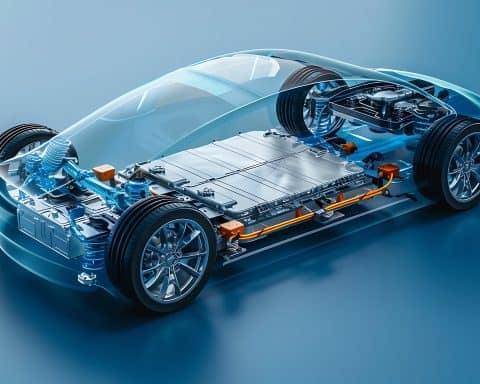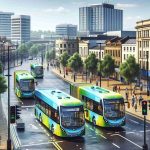Busting the Electric Vehicle Charger Myth
Claims have surfaced on social media suggesting that the Biden administration wasted $7.5 billion constructing a mere eight electric vehicle (EV) chargers. This misleading narrative has caught the attention of many, but the truth reveals a more complex story about the funding and development of a nationwide EV charging network.
The Reality Behind the Funding
The $7.5 billion was actually designated by the 2021 Infrastructure and Jobs Act to facilitate the installation of 500,000 EV chargers by 2030, not just eight. To date, 214 chargers are already operational, with thousands of projects ongoing, each managed at the state level.
Understanding the Money Flow
The funds were divided into two main initiatives: the National Electric Vehicle Infrastructure Formula Program (NEVI), which received $5 billion, and the Charging and Fueling Infrastructure discretionary grants (CFI), set at $2.5 billion. NEVI supports compliance with federal standards, while CFI aims to enhance access for underserved areas.
State-Controlled Implementation
Although the federal government provides the funds, the actual building and upkeep of the chargers falls to individual states. The rollout’s pace varies significantly due to states’ differing levels of experience with such infrastructure projects.
Moving Beyond Myths
Despite misinformation and criticisms, the overall strategy is progressing. Nearly 25,000 chargers are currently in various stages of completion, and the initiative is key to advancing U.S. climate objectives and supporting electric vehicle adoption.
The progress may be incremental, but the administration remains committed to its overarching goal: establishing a sustainable and accessible EV charging network across the United States by 2030.
Revolutionizing Roadways: The Untold Impacts of the U.S. Electric Vehicle Charger Rollout
As the United States races towards a greener future, the initiative to install 500,000 electric vehicle (EV) chargers by 2030 is much more than just a numbers game—it’s about transforming infrastructure, technology, and societal norms related to transportation and energy.
How EV Chargers Could Reshape Infrastructure
The deployment of EV chargers necessitates significant upgrades to existing infrastructure. This includes enhancing the electrical grid to handle increased power demands and incorporating smart technology to manage energy efficiently. These changes are not just about supporting EVs but pave the way for future technological advancements such as smart cities and integrated energy solutions.
Impact on Energy and Economy
One of the profound effects of this initiative is its influence on the energy sector. With more EVs on the road, dependency on fossil fuels could decrease, potentially reducing greenhouse gas emissions. This shift also stimulates economic growth by creating jobs in EV manufacturing, charger installation, and grid maintenance. New businesses focused on EV technologies and renewable energy solutions are poised to flourish.
Innovations and Controversies
The initiative has spurred a wave of technological innovations. Battery advancements, enhanced charging speeds, and more efficient energy management systems are just the beginning. However, the progress is not without its challenges. Critics argue about the environmental impact of battery production and the ethical considerations of sourcing materials like lithium and cobalt. Can the EV industry find sustainable solutions to these issues?
The Pros and Cons
Advantages:
– Environmental Benefits: Reduction in greenhouse gas emissions and air pollution.
– Economic Growth: Job creation and new industries.
– Technological Advancement: Innovations in energy and automotive sectors.
Disadvantages:
– Infrastructure Strain: Intense demand on the electrical grid and financial resources.
– Resource Concerns: Ethical and environmental issues surrounding battery production.
– Equity Issues: Ensuring equal access to charging infrastructure in rural and underserved areas.
Questions and Answers
– How will the EV charger rollout affect electricity consumption?
The increased demand from EVs will push utilities to expand capacity and enhance grid resilience. This may encourage the adoption of renewable energy sources to meet new demands.
– Are there solutions for rural areas with limited EV infrastructure?
Strategies such as mobile charging units and partnerships with local businesses could ensure wider accessibility in less dense regions.
– Will this initiative really help combat climate change?
If complemented by policies promoting renewable energy, the EV charger rollout can significantly contribute to reducing carbon footprints and achieving climate goals.
For those interested in the broader implications of these developments, visit Department of Energy and EPA. These resources provide comprehensive insights into how energy and environmental policies intersect with the EV revolution.
As the race to a sustainable transportation landscape continues, the EV charging initiative not only drives technological innovation but also challenges us to think critically about our future infrastructure needs and environmental responsibilities.
















